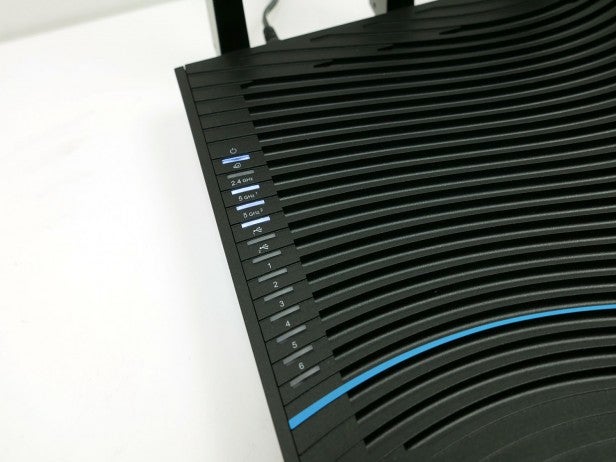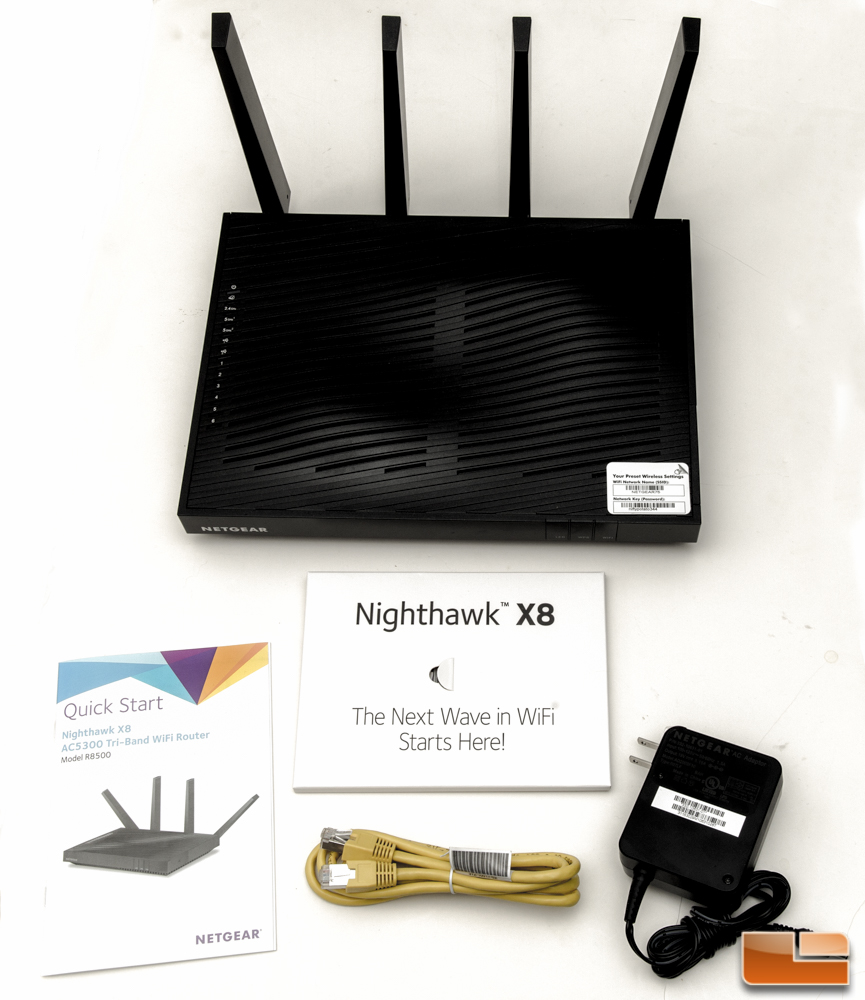

This is chiefly of benefit to incoming WiFi signals which are often from low power devices that emphasize form factor over antenna power. Netgear claims it not only amplifies a cleaner signal, it also avoids some natural noise that is incurred when locating the amplifiers on the main board.

It may not seem like a big deal except that the signal is amplified right at the antenna instead of having to travel to the router board before getting boosted. To accomplish this, Netgear moved the WiFi amplifiers from the motherboard to the top of each of the four antennas. One of the big advantage-claims of the Netgear Nighthawk X8 router is its use of active antennas. For now, the feature wasn’t available for consumer use. Word on the street is that Netgear will release a firmware update later this year that will enable MU-MIMO. The problem is, it’s not currently active (as of this writing). With the Netgear AC5300 router, that translates into the ability to efficiently stream dedicated signals to up to six devices simultaneously (three discrete bands and two streams per band)… sort of. This isn’t the first router whose hardware supports MU-MIMO (the MU stands for “Multi-User”), but it’s still an impressive (and fairly new) technology for home users that basically lets you efficiently transmit data to several MU-MIMO-compatible 802.11ac Wi-Fi devices at the same time instead of your router having to quickly switch between devices when sending data. Understanding what makes this router so fast, however, requires a bit more explanation of what’s under the hood. The Netgear Nighthawk X8 router features the Broadcom 4×4 5G Xstream platform that uses a 1.4GHz dual-core BCM47094 ARM Cortex A9 processor tied to three BCM4366 4×4 MU-MIMO-capable active radios. Compare that to the Netgear Nighthawk X6 R8000 router which has 1300 + 1300 + 600 Mbps (3200Mbps or AC3200).Īnd you thought Gigabit Ethernet was impressive! He’s how that looks in a Netgear-provided visual (sometimes charts do a better job than words): When you add 2150 + 2150 + 1000 you get 5300Mbps of total potential wireless bandwidth. It uses a new Broadcom platform that supports four spatial streams and NitroQAM (1024-state quadrature amplitude modulation) that raises the throughput of each stream to around 1000Mbps for the 2.4GHz network and 2150Mbps on each of the 5GHz networks. The AC5300 designation means that this router is a tri-band model that broadcasts two 5GHz networks along with a third, discrete 2.4GHz network. The technical name for this router is the Netgear Nighthawk X8 AC5300 Tri-Band Wifi router, but the model number is R8500. Netgear Nighthawk X8 Router Featuresįirst off, Netgear has some very odd naming schemes for its products.

The Netgear Nighthawk AC5300 Tri-Band WiFi router makes some excellent claims to manage all of that for you.

Do that enough, add in some more elements like YouTube or multiple music feeds, and you may run into difficulties if you don’t manage all of that network traffic.
Nighthawk x8 r8500 review 1080p#
That’s 1080p content that flows through the wireless network on my home-and often there’s more than one stream being sent simultaneously. I stream a lot of music from Spotify, but I also perform much more difficult tasks like pulling down content from DISH Netflix streaming and VUDU. When the Netgear Nighthawk X8 router was announced, I studied the specs and features and decided this would be a worthy use of my time to step up from the Netgear Nighthawk X6 router I had been using to optimize my wireless streaming for the past couple of years. I’ve grown fond of not having to touch my routers once they’re set up, but something that will consistently pull me into the mood of upgrading is a product which promises more real-world speed and usable features.


 0 kommentar(er)
0 kommentar(er)
